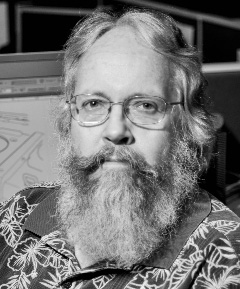New Book! ‘Wicked Crescenta Valley’

president of the Historical Society
of the Crescenta Valley and loves local history. Reach him at
lawlerdad@yahoo.com.
Books on the history of the Crescenta Valley have been numerous in the last few years, and more are coming! There are two out in the next couple of weeks – “Wicked Crescenta Valley”, available now, and “Frontier Days in Crescenta Valley: Portraits of Life in the Foothills”, which releases in a few days. I’ll review “Frontier Days” next week.
“Wicked Crescenta Valley” is the latest from Gary Keyes and myself, which airs more of the Crescenta Valley’s “dirty laundry”. Last year we released “Murder and Mayhem in the Crescenta Valley”, which covered grisly killings in our peaceful burg. “Wicked” covers the crimes and injustice that have been perpetrated here over the last couple hundred years.
The first chapter is (of course) “Sex.” It starts in the 1800s – the “dance wars” of La Cañada in which the community was violently split over the morality of public dances, fueled in large part by the alluring dance master, a Miss Sexton. Prostitution has always been part of our landscape, from the whore house of turn-of-the-century Whiting Woods to recent prostitution busts in the Montrose Shopping Park. One of the earliest nudist camps in the US was established in La Tuna Canyon in 1935. And a whopping four of LA’s famous pedophile priests committed their sex crimes here in CV.
In the next chapter “Prejudice” we point out that the KKK has had a major presence here for much of our history. In 1924, Verdugo Park hosted a huge KKK rally attracting tens of thousands, and culminated in a fiery cross burning above Glendale College, visible to both CV and Glendale. And in the ‘60s, the California KKK conducted their business from Mayfield Avenue in La Crescenta. The chapter “Drugs and Alcohol” outlines local bootlegging during Prohibition, and “Wartime” tells the sad story of “Tuna Camp,” our own local WWII Japanese internment camp.
My favorite chapter is “Oddballs and Freaks.” In that chapter we tell about the earliest “alien abduction” of modern times, in which two women were repeatedly abducted in Big Tujunga Canyon starting in 1953, and how Big Tujunga is considered a “hot spot” of extraterrestrial activity by UFO experts. It also tells the story of Tujunga’s Hog Farm Commune, led by Wavy Gravy, the famous emcee at Woodstock, and how Charlie Manson tried to make that his base of operations for his murder spree. Montrose’s pseudo-swastika lampposts and a JPL founder’s satanic cult connections are also covered.
The “Cons and Swindles” and “Crime” chapters go hand-in-hand to show us that the Harding administration’s Teapot Dome Scandal enabled its perpetrator Harry Sinclair to purchase a very nice house in La Cañada, and how La Crescenta property owners were the victims of a fake oil boom in the ’20s. How many of us knew that the man considered to be most responsible for the financial meltdown of 2008 lived across the street from the Oakmont Country Club? And that one of the most famous kidnappings of the 20th Century had its “gangbusters” style culmination on Rosemont Avenue? Hear the story of Glendale Fire Captain John Orr, perhaps the most famous serial arsonist in history, and read first-hand stories of the 1975 Foothill Boulevard Riots, in which some of my readers may have participated.
There is a chapter on the politics of our area, in which neo-Nazis and Red-baiting militants take center stage. A proposed Constitutional Amendment, the Pace Amendment, was authored in Glendale and, if enacted, would have stripped U.S. citizenship from all “non-white” citizens. The Foothills gave the U.S. five different major political figures that ended their careers in either scandal or prison. The last chapter tells the sad tale of the many TB sanitariums in CV, in which literally thousands gasped out their last breaths, and of our insane asylums with their chilling and lurid tales.
You won’t find this book offered at our local chamber of commerce offices, as it presents an admittedly jaundiced view of our history. But we’ve heard most of the “good” stories from our history. Historical accuracy demands equal time for the “bad” stories. This book has nothing but!
